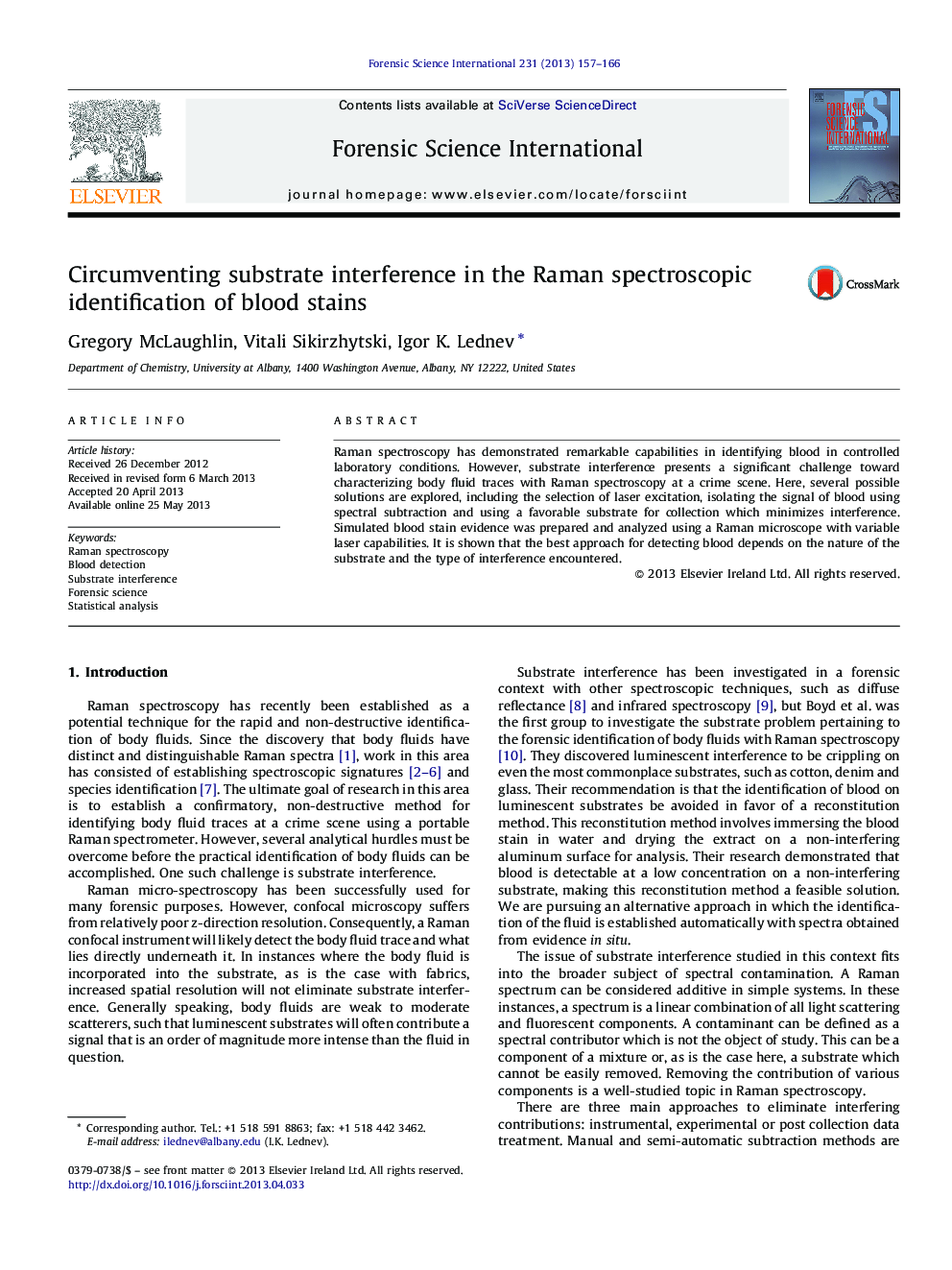| Article ID | Journal | Published Year | Pages | File Type |
|---|---|---|---|---|
| 95832 | Forensic Science International | 2013 | 10 Pages |
Abstract
Raman spectroscopy has demonstrated remarkable capabilities in identifying blood in controlled laboratory conditions. However, substrate interference presents a significant challenge toward characterizing body fluid traces with Raman spectroscopy at a crime scene. Here, several possible solutions are explored, including the selection of laser excitation, isolating the signal of blood using spectral subtraction and using a favorable substrate for collection which minimizes interference. Simulated blood stain evidence was prepared and analyzed using a Raman microscope with variable laser capabilities. It is shown that the best approach for detecting blood depends on the nature of the substrate and the type of interference encountered.
Related Topics
Physical Sciences and Engineering
Chemistry
Analytical Chemistry
Authors
Gregory McLaughlin, Vitali Sikirzhytski, Igor K. Lednev,
